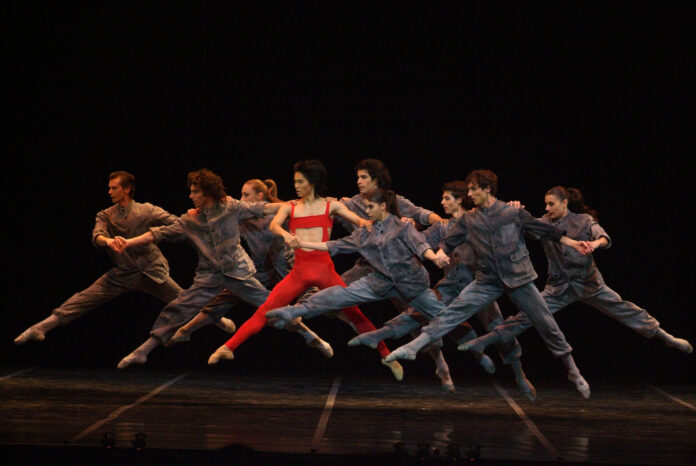The figure of the choreographer Mikhail Fokin was established only after great battles.
The dance work, likely by the work of art, has acquired a value in itself since the beginning of the last century, thanks to personalities such as Mikhail Fokin, of Russian origin but Frenchized in Michel Fokine. He was the first choreographer of Diaghilev’s Ballets Russes in Paris.
His autobiography was edited by the Latvian-American critic and historian of dance Anatole Chujoy, under the title Memoirs of a Ballet Master. It was published in Boston and London in 1961. Now it is also available in Italian, “Memorie di un coreografo”, for LIM editions, translated by Viviana Carpifave. In the introduction, his son Vitale tells of his enormous business to translate mountains of documents from Russian signed by his father.
His father was born in St. Petersburg in 1880 and died in New York in 1942. Between these two dates and these two places there is the story of the ballet of the twentieth century.
The cover of the book portrays the choreographer while dancing in a photo of the Atelje Jaeger in Stockholm dated 1914. It was a shot from Fokine’s Carnaval himself on Schumann’s music. The Italian art comedy was a leading reference for the avant-garde of theater and dance in Russia.
Fokine’s commitment to the narrative artistic ballet consists of plunging himself into the highest cultural pride.
The repertoire and the thought
In 1914 a letter from the choreographer appeared in the Times that supported his principles to create ballets with steps, costumes, gestures, music, expressive dance troupe, always suited to the subject, overcoming stereotyped ways and the prevalence of technique alone in the traditional art dance.
After that, Fokine ended up deciding to try his luck in the United States, where he arrived in 1921, fighting decisively against US modern dance, but saving the free one of Isadora Duncan. The Ballet sounded quite odd in the New World, an elitist art that struggled to find its authentically American form, by Russian artists anyway, from George Balanchine to Mikhail Mordkin.
Among the masterpieces of Fokine, a real reforming choreographer, we must mention at least Chopiniana / Les Sylphides, Shéhérazade, Specter de la rose, Petrushka, Daphnis and Chloé; a moment of supreme happiness for him was “Oiseu de feu” which was assembled step by step in tight relationship with the music composed by Igor Stravinsky. That title was so impressive that Maurice Béjart made an equally successful remake of it, in a Maoist key in 1970.
Struggles and successes
Fokine’s memoirs are a direct observatory on intrigues and events in the world of the Tsarist court ballet. It describes joys and sorrows in the company of Diaghilev, abandoned after being overcome by favorite Vaslav Nijinsky, only to reconcile briefly with the patron. Meanwhile, he actually joined the group formed by the Divine Anna Pavlova in 1913. She was also a migrant because she was in turn crushed by Nijinsky’s fame.
In the post-Diaghilev phase, Fokine would stage Les Elfes for his Fokine Ballet (1924), L’épreuve d’amour (1936) for René Blum’s Ballets Russes de Monte-Carlo. He would also remake Le Coq d’or for the company of Colonel de Basil (1937) and would sign Bluebeard and The Russian Soldier for the Ballet Theater in the early 1940s after having edited Paganini in 1939, in a last supreme creative effort, as writes his son.
The eternal death of the swan

The death of the swan / The Dying Swan that Fokine conceived to music by Saint-Saëns for Pavlova in St. Petersburg in 1907, is a cameo, an icon, a cornerstone of such impact that it reverberates in the creative imagination of legions of authors, interpreters , performer, overcoming all boundaries of cultures and genres until today. Just look at the African American Lil Buck accompanied by the Chinese American Yo Yo Ma.
In homage to Mikhail Fokin, at the time of his passing, seventeen ballet companies from all over the the world performed Les Sylphides simultaneously.
La figura del coreografo-artista Mikhail Fokin si è affermata solo dopo grandi battaglie.
L’ “opera di danza”, per analogia con l’opera d’arte, ha conquistato un valore in sé dagli inizi del secolo scorso, per merito di personalità come quella di Mikhail Fokin, russo, francesizzato in Michel Fokine, il primo coreografo dei Ballets Russes di Diaghilev a Parigi.
La sua autobiografia, curata dal critico e storico della danza lettone-statunitense Anatole Chujoy, Memoirs of a Ballet Master, pubblicata a Boston e a Londra nel 1961, è ora disponibile anche in italiano, Memorie di un coreografo, per le edizioni LIM, nella traduzione di Viviana Carpifave. Nell’introduzione il figlio Vitale racconta il suo enorme lavoro di traduzione dal russo di montagne di documenti a firma del padre.
Il padre era nato a San Pietroburgo nel 1880 e morto a New York nel 1942. Nell’arco di tempo e di spazio che separa queste due date e questi due luoghi c’è la storia del balletto e della danza del Novecento.
La copertina del libro ritrae il coreografo come danzatore in una foto dell’Atelelje Jaeger di Stoccolma datata 1914; si tratta di uno scatto da Carnaval di Fokine stesso su musica di Schumann. La Commedia dell’Arte italiana fu un riferimento di spicco per le avanguardie del teatro e della danza in Russia.
L’impegno di Fokin nel “balletto narrativo d’arte” è l’impresa, in cui si spese con orgoglio culturale altissimo.
Il repertorio e il pensiero
Nel 1914 sul Times apparve una lettera del coreografo che sosteneva i suoi principi per creare balletti con passi, costumi, gesti, musica, corpo di ballo espressivo, sempre coerenti all’argomento, superando i modi stereotipati e la prevalenza della sola tecnica nella danza d’arte di tradizione.
Dopo di che Fokine finì per decidere di tentare la sorte negli Stati Uniti, dove giunse nel 1921, battendosi decisamente contro la danza moderna USA, ma salvando quella libera di Isadora Duncan. Il balletto risultava un “corpo estraneo” nel Nuovo Mondo, un’arte elitaria che faticò molto a trovare la sua forma autenticamente americana, ad opera di artisti russi comunque, da George Balanchine a Mikhail Mordkin.
Tra i capolavori di Fokine, coreografo riformatore, vanno citati almeno Chopiniana/Les Sylphides, Shéhérazade, Spectre de la rose, Petrushka, Daphnis et Chloé; un momento di felicità suprema fu per lui l’Oiseu de feu montato passo passo in relazione diretta con la musica compossta da Igor Stravinsky. Un titolo tanto importante che Maurice Béjart ne fece un remake di altrettanto successo, in chiave maoista nel 1970.
Lotte e successi
Le memorie di Fokine sono un osservatorio diretto su intrighi e vicende nel mondo del balletto di corte zarista. Raccontano gioie e dolori nella compagnia di Diaghilev, che abbandonò dopo esser stato soppiantato dal favorito Vaslav Nijinsky, per poi riconciliarsi brevemente con il ‘patron’, avendo intanto raggiunto il gruppo formato dalla Divina Anna Pavlova nel 1913, pure lei migrante perché schiacciata a sua volta dalla fama di Nijinsky.
Nella fase post-Diaghilev Fokine metterà in scena Les Elfes per il suo Fokine Ballet (1924), L’épreuve d’amour (1936) per i Ballets Russes de Monte-Carlo di René Blum; rifarà Le Coq d’or per la compagnia del Colonel de Basil (1937), firmerà Barbablu e The Russian Soldier per il Ballet Theatre nei primi anni Quaranta dopo aver montato nel 1939 Paganini, in un ultimo “sforzo” creativo supremo – scrive il figlio.
L’eterna morte del cigno
La morte del cigno/The Dying Swan che Fokine ideò su musica di Saint-Saëns per la Pavlova a San Pietroburgo nel 1907, è un cammeo, un’icona, un caposaldo di tale impatto da riverberarsi nella fantasia creativa di legioni di autori, interpreti, performer, superando ogni confine di culture e di generi fino a oggi. Basta guardare all’afroamericano Lil Buck accompagnato dal violoncellista cinoamericano Yo Yo Ma.
In omaggio a Mikhail Fokin, al momento della sua scomparsa, diciassette compagnie di balletto di tutto il mondo eseguirono Les Sylphides contemporaneamente.








